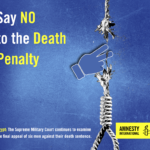"There was a time when creation required teams, studios, and long processes. But today, armed with imagination, strategic vision, Adobe's precision, and the infinite horizons of AI, I no longer feel like a content creator—I feel like an entire agency and production house, embodied in a single mind guided by purpose."
Design is my passion. My journey began at the age of 16, when I purchased my first computer and installed Photoshop, followed by Illustrator, gradually exploring the Adobe Creative Suite. Today, this skill not only enables me to supervise production more effectively but also allows me to create in-house publications whenever necessary.
Sometimes, when the goal is to explain a law or a concept, 2D animation proves to be the most effective tool. It helps clarify, raise awareness, and persuade our followers to advocate for a human right or support an idea that promotes environmental protection.

"I believe that if tools like Photoshop, Illustrator, and After Effects don’t evolve with the rise of AI, they may end up like Kodak and Nokia—once essential, now forgotten."
Artificial intelligence (AI) has emerged as a strategic game-changer in our communication efforts for major events like COP16 and HCI25. One of its most significant contributions is solving the long-standing challenge of copyright restrictions. With generative AI, we can now create fully customized, original visuals tailored to our messaging and creative vision—without relying on stock imagery or lengthy licensing processes. What matters today is no longer mastering design software, but mastering the art of description. In essence, being a strong visual copywriter is key: the better we describe what we imagine, the more accurately AI can bring it to life. From still images to videos, tasks that once required both a communication agency and a production company can now be accomplished with just two AI solutions. This shift allows us to respond faster, cut costs dramatically, and align every visual asset precisely with our strategic narratives.
Social Media Posts






Video



For the HCI video, the creation process was a blend of creative writing, AI tools, and traditional editing software. First, I wrote the script and produced a custom voice-over using an AI tool, carefully selecting a voice that matched the tone we wanted to convey. Then, using another AI platform specialized in video creation, I generated the animation based on detailed prompts derived from the script. To enhance the final product, I purchased licensed music from a professional music library, ensuring that we maintained high-quality standards and full copyright compliance. I then edited the video using Adobe After Effects and Adobe Premiere, combining all elements—visuals, voice-over, music, and transitions—into a polished final version. The logos and graphic elements were prepared separately with Adobe Illustrator and Photoshop to guarantee visual consistency throughout the video.


